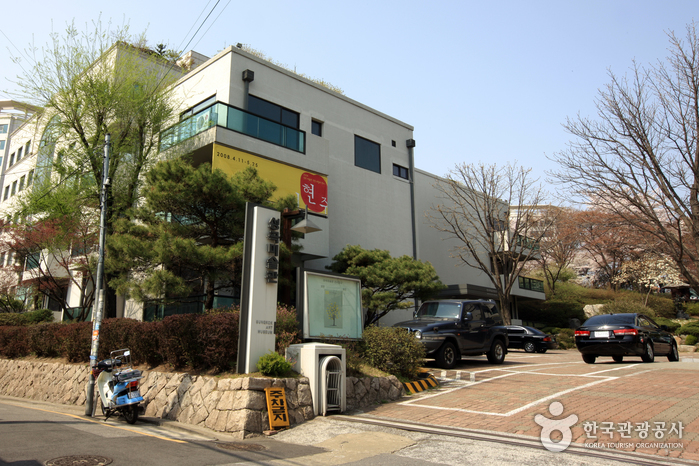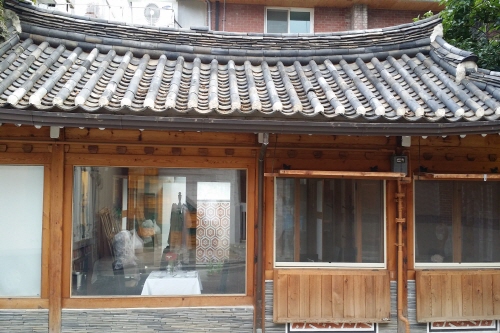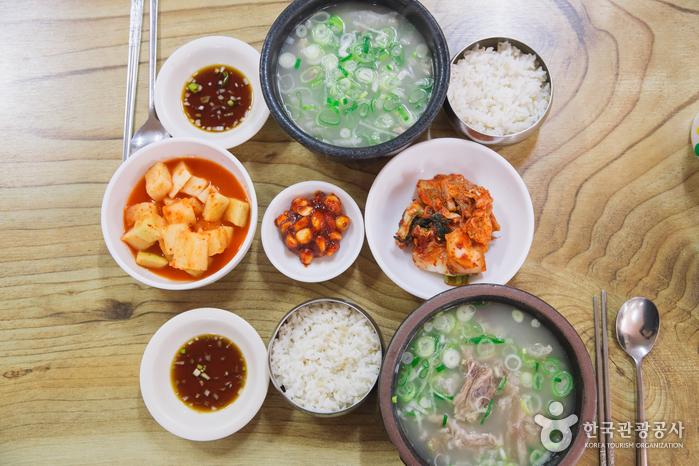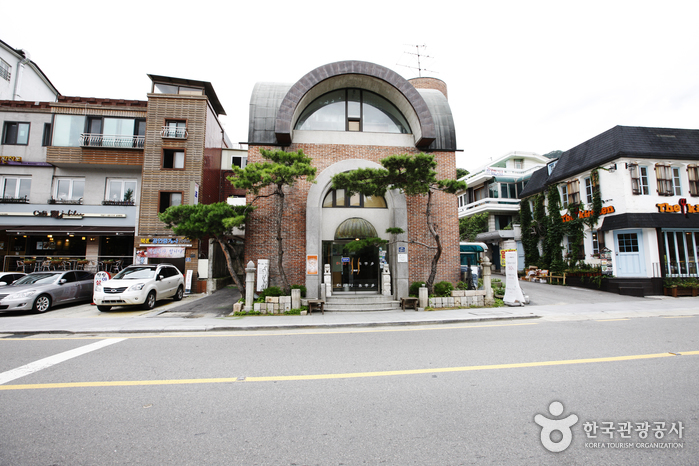Chengha Korea Ginseng Co., Ltd.[Korea Quality] (청하고려인삼(주)[한국관광 품질인증])
1.4Km 4877 2024-07-01
280 , Jahamun-ro, Jongno-gu, Seoul
+82-2-395-1688
Cheonghagoryeo Ginseng Co Ltd in Jongno-gu, Seoul, is a specialist Korean ginseng company aiming to promote the history, culture, and efficacy of Korean ginseng to foreign tourists. The headquarters building houses a ginseng museum, two stores, a bank and a cafe. There are staff who are fluent in foreign languages, to help visitors with reservations, museum guidance, product consultation, and sales. We operate a thorough follow-up support service to ensure customer satisfaction.
Cheongha Korean Ginseng [Tax Refund Shop] (청하고려인삼)
1.4Km 0 2024-04-22
280, Jahamun-ro, Jongno-gu, Seoul
-
Sungkok Art Museum (성곡미술관)
1.5Km 14248 2021-02-10
42, Gyeonghuigung-gil, Jongno-gu, Seoul
+82-2-737-7650
Sungkok Art Museum was founded in 1995 by the Korean corporation Ssangyong to promote Korean art. The gallery offers a special exhibition featuring modern artworks of Korean artists, as well as competitions and sponsorships to develop Korean art. In addition to the main building, there is an annex, as well as a tea house and art shop.
Beodeul Maru - Korea Cultural Heritage Foundation Branch [Tax Refund Shop] (한국문화재재단 버들마루)
1.5Km 0 2024-04-17
37, Samcheong-ro, Jongno-gu, Seoul
-
Dongnimmun Gate (독립문)
1.5Km 30799 2022-12-15
251, Tongil-ro, Seodaemun-gu, Seoul
Dongnimmun stands at the location originally known as Yeongeun, where envoys were once treated. When a Chinese envoy visited, the King would go out through this door to greet. In 1898, to announce the independence from Japan, Dongnimun was constructed with the fund collected by the citizens. The traces of the past still remain on Dongnimmun with two pillars in front of Dongnimmun being the remains of Yeongeunmun.
The Arc de Triomphe in France can be recalled in comparison to Dongnimmun. Dongnimmun was built using granite with a passageway x_height of 14.28 meters. On the top it is written ‘Dongnimmun’ in Korean with the national flag drawn on each side. On the inner-left side there are stone stairs leading to the attic. The national flower Mugunghwa are planted around Dongnimmun. Now it is surrounded by roads and it is eye-catching to view when passing by.
Châtaigne (샤떼뉴)
1.5Km 6180 2021-12-29
19, Samcheong-ro 5-gil, Jongno-gu, Seoul
+82-2-736-5385
Châtaigne is a French restaurant housed in a charming hanok (traditional Korean house) that was remodelled to accommodate dining tables and chairs. Châtaigne uses seasonal ingredients to create a simple and unique French course meal.
Daesungjip (대성집)
1.5Km 2712 2021-03-27
5, Sajik-ro, Jongno-gu, Seoul
+82-2-735-4259
Daejungjip has specialized in Dogani tang (ox knee joint soup) for 60 years. Customers can feel a simple and familiar ambience at the restaurant.
Seodaemun Prison History Museum (서대문형무소역사관)
1.5Km 155856 2022-12-15
251, Tongil-ro, Seodaemun-gu, Seoul
+82-2-360-8590
Seodaemun Prison was built under the Japanese administration to imprison independence movement activists. It first opened on October 21, 1908 under the name Gyeongseong Prison. Eventually, so many activists were imprisoned that the building had to be expanded. At that time, the name changed to Seodaemun Prison on September 3, 1912. Eighty years later, the prison was turned into Seodaemun Independence Park on August 15, 1992 to commemorate the Korean patriots who were tortured in prison, giving their lives for freedom. Of the many buildings, only seven were preserved for their historical significance, among which three prison buildings and the execution site were designated as a Historic Site. In 1998, the park underwent another transformation into today's Seodaemun Prison History Hall to educate the public on the importance of Korea's independence and the sacrifices of those who fought to achieve it.
CheongKwanJang - Hongje Branch [Tax Refund Shop] (정관장 홍제)
1.5Km 0 2024-04-16
1F, 405, Tongil-ro, Seodaemun-gu, Seoul
-
Darakjeong (다락정)
1.5Km 340 2021-03-26
131-1, Samcheong-ro, Jongno-gu, Seoul
+82-2-725-1697
Darakjeong has been popular for a long time because of the simple taste of its traditional Mandu (Korean stuffed dumpling). Since its opening in 1991, tasty soup and scrumptious Mandu have been served. A fist-sized Mandu is fully packed with seasoned meat, bean-curd, and various vegetables. Its thick dough makes it chewy and delightful. For one person, “Manduguk”(boiled dumpling soup) is a good choice. The delicious and nourishing taste of Mandu goes well with the sweet, spicy, and fresh taste of the soup. Manduguk is served in a brass bowl which keeps the food warm while eating. For a large-size group, “Mandujeongol” cooked with various vegetables in a casserole is recommended. There are two types of Mandujeongol that have different tastes. The main characteristic of “Kimchi Mandujeongol” is its spicy flavor, which reminds people of the refreshing taste of Kimchi soup, and “Tojang Mandujeongol” expounds on the savory taste of bean-paste soup. Tojang means folk soybean-paste. “Nokdujeon”(a Korean pan-fried dish with green mung bean) is another famous dish at Darakjeong, which is pan-fried with a very light seasoning to emphasize the original taste of Nokdu (green mung bean). Salted oysters with hot pepper are served with Nokdujeon instead of soy sauce, which is a perfect match.
![Chengha Korea Ginseng Co., Ltd.[Korea Quality] (청하고려인삼(주)[한국관광 품질인증])](http://tong.visitkorea.or.kr/cms/resource/13/2579813_image2_1.jpg)
![Cheongha Korean Ginseng [Tax Refund Shop] (청하고려인삼)](http://tong.visitkorea.or.kr/cms/resource/82/2890682_image2_1.jpg)




![CheongKwanJang - Hongje Branch [Tax Refund Shop] (정관장 홍제)](http://tong.visitkorea.or.kr/cms/resource/34/2889534_image2_1.jpg)

 English
English
 한국어
한국어 日本語
日本語 中文(简体)
中文(简体) Deutsch
Deutsch Français
Français Español
Español Русский
Русский